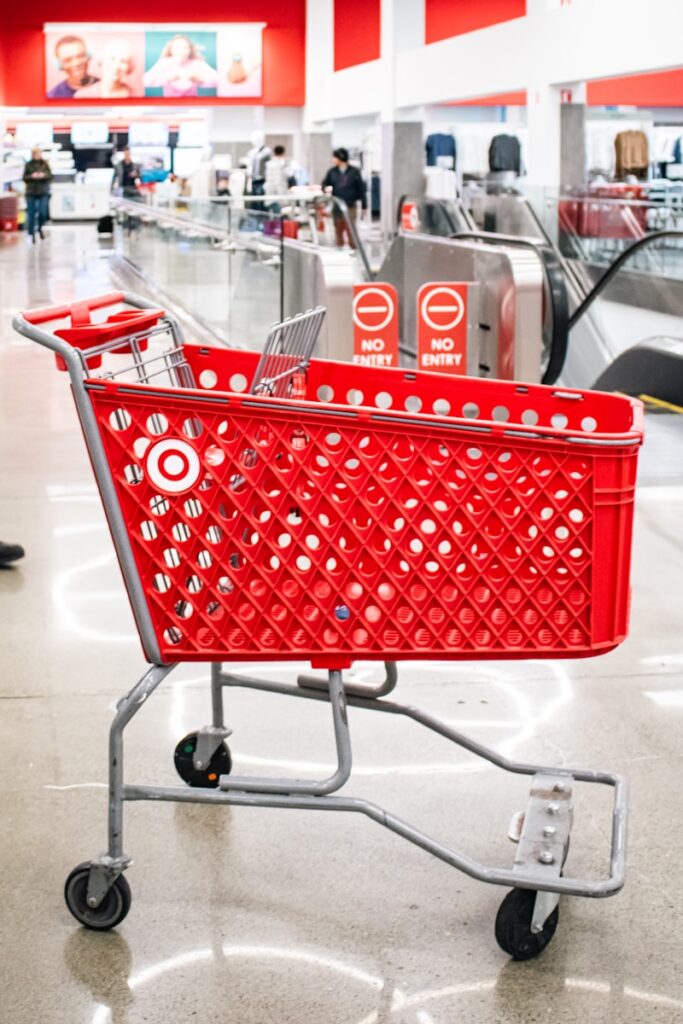Physical Address
304 North Cardinal St.
Dorchester Center, MA 02124
Physical Address
304 North Cardinal St.
Dorchester Center, MA 02124

Find the best deals from Target for the week of:







From its humble beginnings as a dry goods store in 1902, Target Corporation has evolved into one of the most recognizable and successful retail chains in the United States. Unlike many of its competitors, Target has masterfully carved out a unique identity, positioning itself as the “cheap-chic” destination for everyday essentials and discretionary splurges alike. With its iconic bullseye logo and a powerful brand promise of “Expect More. Pay Less,” Target has transcended its role as a mere retailer to become a woven thread in the fabric of American consumer culture, offering a curated shopping experience that balances value, style, and convenience.
Walking into a Target store is a carefully engineered experience. The layout is designed to be intuitive yet exploratory, encouraging what shoppers and employees colloquially call the “Target Run.” This phenomenon describes a trip intended for a few specific items that effortlessly transforms into a cart-full of unplanned purchases. The store’s wide, clean aisles, strategic lighting, and well-organized sections create an inviting atmosphere that feels more upscale than a typical big-box store.

A key element of this strategy is the “Target Treasure Isle,” the first section encountered upon entering. This area is filled with highly seasonal, trendy, and discounted items—from dollar-section finds to holiday decor. It immediately sets a tone of discovery and value. The store then typically flows into apparel, home goods, and electronics before leading to groceries and essentials at the back, ensuring customers pass numerous high-impulse departments on their journey. This deliberate pathing, combined with stylish displays and exclusive brand partnerships, makes the act of shopping feel less like a chore and more like a leisure activity.
A cornerstone of Target’s success is its formidable portfolio of private-label brands. While other retailers have house brands, Target has elevated them to a status of their own, often rivaling national name brands in quality and design. Brands like Good & Gather for food, Up & Up for pharmacy and essentials, and Everspring for cleaning supplies offer consumers quality and consistent value.
However, Target’s true genius lies in its designer collaborations and exclusive partnerships. The launch of its limited-time partnership with iconic designer Isaac Mizrahi in the early 2000s set a new precedent, bringing high fashion to the masses at affordable prices. This strategy was perfected with subsequent wildly successful collaborations with brands like Missoni, Lilly Pulitzer, and, more recently, Diane von Furstenberg and Ronaldo’s “CR7” line. These collections create immense buzz, often selling out online and in stores within hours, and firmly cement Target’s reputation as a trendsetter. Furthermore, long-term exclusive partnerships with popular brands like Cat & Jack for children’s clothing and Threshold for home decor have built lasting customer loyalty.
Recognizing the seismic shift in consumer behavior, Target has aggressively and successfully invested in its digital and omnichannel capabilities. Its website and highly-rated mobile app serve as seamless extensions of the physical store, allowing for easy browsing, digital coupons, and a streamlined checkout process. The company’s acquisition of Shipt in 2017 was a strategic masterstroke, enabling it to offer same-day delivery and directly compete with services like Amazon Prime.
Perhaps its most transformative service is Drive Up, which allows customers to order through the app and have their purchases brought directly to their car in the store’s parking lot, often within minutes. This service, alongside in-store pickup and Shipt delivery, provides unparalleled convenience that caters to the modern demand for speed and efficiency. By integrating its physical stores as fulfillment centers, Target has turned its vast real estate network into a competitive advantage, effectively bridging the gap between digital and brick-and-mortar retail.
Despite its success, Target faces significant challenges. The company has grappled with inventory issues, the economic pressures of inflation on its core demographic, and, notably, a wave of organized retail theft that prompted it to close several stores in major cities in 2023. These issues highlight the complex realities of modern retail.
Yet, Target maintains a strong connection to its communities. Its commitment is visible through its diverse product offerings, its support for local suppliers in its grocery sections, and its robust corporate social responsibility programs, which include significant donations to education and local communities. The store often positions itself as a one-stop shop for back-to-school shopping, holiday gifts, and everyday life, making it a reliable and integrated part of the neighborhoods it serves.
In conclusion, Target’s enduring appeal lies in its multifaceted approach. It is not just a place to buy groceries and toilet paper; it is a destination for inspiration, a hub of convenience, and a curator of affordable style. By consistently understanding and adapting to the desires of its guests, Target has secured its place not just as a retail giant, but as a beloved and enduring American institution.